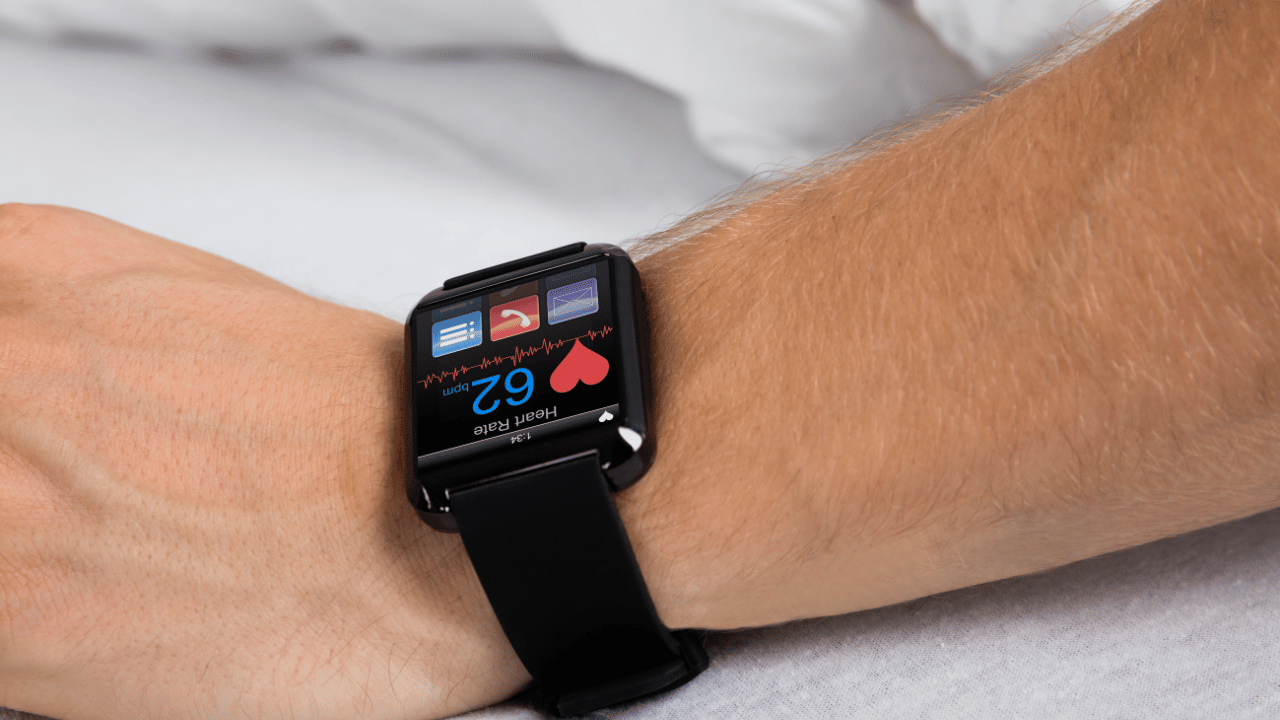Smart Watch Blood Pressure Accuracy: How Reliable Is It?
✅Smart watch blood pressure accuracy is improving, but it’s not as reliable as traditional monitors. Always double-check with a medical device for critical readings.
Smart watches with blood pressure monitoring capabilities have become increasingly popular, but the question remains: How reliable is the blood pressure accuracy of these devices? While many smart watches claim to offer accurate readings, the reliability can vary significantly based on several factors including the device’s technology, user application, and calibration.
To understand the reliability of smart watch blood pressure monitors, it’s important to delve into the technology behind these devices and the factors that can affect their performance. This article will explore the accuracy of smart watch blood pressure monitors, compare them to traditional methods, and provide insights into how users can maximize the accuracy of their readings.
Technology Behind Smart Watch Blood Pressure Monitors
Most smart watches use optical sensors that employ photoplethysmography (PPG) to estimate blood pressure. PPG measures the blood volume changes in the microvascular bed of tissue, which can then be translated into blood pressure readings. Some advanced models may also incorporate additional sensors, such as electrocardiogram (ECG) sensors, to enhance accuracy.
Factors Affecting Accuracy
- Calibration: Many smart watches require initial calibration with a medical-grade blood pressure monitor to ensure accuracy. This process usually needs to be repeated periodically.
- Positioning: Proper positioning of the smart watch on the wrist is crucial. The device should be snug but not too tight, and positioned correctly according to the manufacturer’s guidelines.
- User Movement: Physical activity and movement can affect the accuracy of readings. It’s recommended to be at rest and in a seated position when taking a measurement.
- Device Quality: The accuracy can vary between different brands and models. Higher-end models with advanced sensors tend to provide more reliable readings.
Comparison to Traditional Blood Pressure Monitors
Traditional blood pressure monitors, such as those used in clinical settings, use an inflatable cuff to measure systolic and diastolic pressure. These devices are considered the gold standard for accuracy. In comparison, smart watches can offer convenience and continuous monitoring but may not match the precision of clinical devices.
| Measurement Method | Accuracy | Convenience |
|---|---|---|
| Traditional Blood Pressure Monitor | High | Low |
| Smart Watch Blood Pressure Monitor | Variable | High |
Maximizing Accuracy
To maximize the accuracy of a smart watch blood pressure monitor, users should:
- Calibrate the device regularly with a traditional blood pressure monitor.
- Follow the manufacturer’s guidelines for proper positioning and usage.
- Avoid taking measurements during physical activity or when in motion.
- Use the device in a consistent environment to reduce variability.
While the convenience of smart watches with blood pressure monitoring is undeniable, users should be aware of their limitations and use them as a supplementary tool rather than a replacement for traditional methods. By understanding the technology and best practices for use, individuals can achieve more reliable readings.
Technological Advancements in Smart Watch Sensors for Blood Pressure
With the technological advancements in smart watch sensors for blood pressure, users can now monitor their cardiovascular health conveniently on their wrists. These smart devices have revolutionized the way we track and manage our health on a daily basis.
The accuracy of blood pressure monitoring on smart watches has significantly improved over the years. Thanks to innovative sensor technology and advanced algorithms, these devices can provide users with real-time data on their blood pressure levels.
For example, the latest smart watches equipped with photoplethysmography (PPG) sensors can measure blood pressure by analyzing the user’s pulse waveforms. By leveraging this technology, users can get quick and reliable readings without the need for traditional blood pressure cuffs.
Benefits of Smart Watch Blood Pressure Monitoring
- Convenience: Users can monitor their blood pressure anytime, anywhere, without the need for bulky equipment.
- Continuous Tracking: Smart watches provide ongoing monitoring throughout the day, offering a comprehensive view of cardiovascular health.
- Early Detection: By tracking blood pressure regularly, users can detect any abnormalities or trends that may require medical attention.
- Integration with Health Apps: Data collected by smart watches can be synced with health apps for in-depth analysis and personalized insights.
As smart watch technology continues to evolve, we can expect even greater accuracy and reliability in blood pressure monitoring. These devices have the potential to empower users to take control of their health and make informed decisions based on real-time data.
Comparative Analysis: Smart Watches vs Traditional Blood Pressure Monitors
When it comes to monitoring blood pressure, the emergence of smart watches equipped with this feature has raised questions about their accuracy and reliability compared to traditional blood pressure monitors. In this comparative analysis, we will delve into the key differences between smart watches and traditional blood pressure monitors to determine their effectiveness in providing accurate readings.
Smart Watches for Blood Pressure Monitoring
Smart watches have become increasingly popular for their ability to track various health metrics, including blood pressure. These wearable devices offer the convenience of continuous monitoring throughout the day, allowing users to keep tabs on their blood pressure levels in real time.
- Example: A user can receive alerts on their smart watch if their blood pressure exceeds a certain threshold, enabling them to take immediate action.
- Case Study: Research shows that smart watches with blood pressure monitoring capabilities have the potential to detect irregularities and trends in blood pressure readings.
Traditional Blood Pressure Monitors
On the other hand, traditional blood pressure monitors are known for their accuracy and reliability in providing precise blood pressure readings. These monitors are commonly used in medical settings and are considered the gold standard for blood pressure measurement.
- Tip: For individuals with specific health conditions or those requiring highly accurate blood pressure readings, traditional monitors may be the preferred choice.
Comparing Accuracy and Reliability
While smart watches offer the convenience of blood pressure monitoring on the go, questions have been raised about their accuracy compared to traditional monitors. Studies have shown that smart watches may not always provide consistent and precise blood pressure readings, especially during intense physical activity or movements that can affect sensor placement.
| Smart Watches | Traditional Monitors | |
|---|---|---|
| Accuracy | Varies based on device and user factors | Consistently accurate |
| Reliability | Dependent on sensor accuracy and placement | Highly reliable |
When choosing between a smart watch and a traditional blood pressure monitor, it is essential to consider your specific needs and the level of accuracy required for monitoring your blood pressure. While smart watches offer convenience and continuous tracking, traditional monitors prioritize precision and reliability in blood pressure measurement.
Frequently Asked Questions
How accurate are smart watches in measuring blood pressure?
Smart watches can provide a rough estimate of blood pressure, but they are not as accurate as medical-grade devices.
Can smart watches be used for medical diagnosis?
Smart watches are not intended for medical diagnosis and should not be used as a substitute for professional medical advice.
Are there any factors that can affect the accuracy of blood pressure readings on smart watches?
Factors such as wrist position, movement, and device calibration can affect the accuracy of blood pressure readings on smart watches.
Should I rely solely on my smart watch for monitoring my blood pressure?
It is recommended to use smart watches as a tool for tracking trends rather than relying solely on them for accurate medical measurements.
Are there any regulations in place for the accuracy of health monitoring features on smart watches?
Regulations for the accuracy of health monitoring features on smart watches vary by region, and some countries have stricter guidelines than others.
| Key Points on Smart Watch Blood Pressure Accuracy |
|---|
| Smart watches provide rough estimates of blood pressure. |
| They are not as accurate as medical-grade devices. |
| Factors like wrist position and movement can affect accuracy. |
| Smart watches should not be used for medical diagnosis. |
| Regulations on accuracy vary by region. |
Feel free to leave your comments and check out our other articles for more interesting topics!







